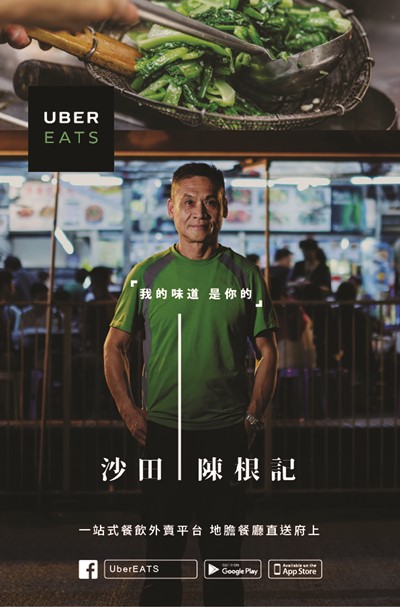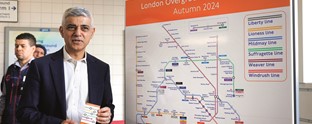Far from home

Brands operating in regions that are not their home territories can face challenges when appealing to local markets. This extends from design to implementation to marketing. Hassan Butt analyses the ways in which brands approach localisation
One of the most apparent indications of the scale of modern globalisation is the international expansion of today’s brands. Despite familiar names cropping up far and wide however, setting up shop in new territory may not necessarily be symptomatic of brand success. There is much to consider in terms of brand strategy, and with fine tuning, advantageous brands can seamless maximise on cross-border advocacy.
But, far-flung brands can easily fall prey to the wrath of disparity. Cautionary tales tell of disaster, misinterpretation and incoherence plaguing attempts to implement a brand internationally. Engaging consumers on home turf however, goes far beyond simply expanding the brand. Largely underpinning the breadth of global brand growth, brand localisation incorporates a wealth of marketing, communications and design elements that are adapted and customised to fit in with a local market.
Considering geography, demographics and cultural norms, brand localisation can range from the use of language – be it translation or a more linguistically focused rework of a brand name – to regulation and regional law. Yet executing a fine balance between reimagined aesthetics and sound strategic blueprints is a big ask, and localisation projects often pose a challenge for branding professionals.
For Christian Lawson, director of brand implementation at global agency, Endpoint, appealing to local consumers, both domestically and internationally, must tap in to the relevant localities. “From an implementation perspective, where consistency in materials and quality should align with the global standards, it is key to understand the capabilities of local contractors. Manufacturing processes, and expected quality levels can differ region to region.
What may have initially been intended to increase brand presence, can quickly become brand damaging due to inconsistencies with brand application, colour and perceived quality expectations.”
Lawson’s observations are supported by a global economic shift that, according to a report by management consultant firm, McKinsey, forecasts almost half of Fortune 500 companies shifting operations to emerging markets by 2025. Foreign markets are becoming far less alien for competing brands, and if one brand makes the decision to expand to a new market, there’s a high chance it takes with it the pool of competitors vying for top position in that category.
Successful brand localisation equally leans on the free market components of economic policy. Cuba for example, has long spurned the advent of capitalist consumerism, leaning on its socialist-driven crutch of ally-provided subsidies and high import rates for most of its goods. Its brand capacity therefore, has never been favourable to international competitors, let alone domestic entrepreneurs hoping to develop Cuban brands. But as the country’s once-firm grip on its anti-capitalist regime loosens, this is swiftly changing.
Earlier this year, Havana saw the opening of the Manzana de Gomez Kempinski, a five-story hotel and shopping centre now home to a cornucopia of international brands such as L’Occitane, Mont Blanc and Lacoste. However, as Cuba’s traditional economic and sociocultural model battles on, its unbalanced market policies have driven a wedge between brand and consumer. Brand localisation could bridge the gap in Cuba’s consumerist entanglement, strategically engaging a consumer-base on its own terms, aligning brand offering with the cultural, and even political sensitivities of a region.
Alternatively, the promotion of brand localisation can have the opposite effect. Despite China’s socialist market economy theoretically propping up narrower margins for brands in similar fashion to Cuba, its economy is the second largest in the world, with over 80 start-ups valued at $1bn or more and innovation statistics that dwarf several competing economies. Yet, China’s consumer patterns are also incredibly different, a 2017 Economist report specified that Chinese consumers are more willing to embrace new brands.
China’s size and diversity mean that brand localisation, such as the example of IHG’s 300 individually customised Chinese hotels, suit the largely heterogeneous nature of the country’s 14 cities and 1.35bn people. Similarly, one of China’s most popular brands, WeChat, has allowed for digital marketers to localise brand offerings even further, by implementing unique QR codes for different locations, allowing brands to segment followers and refine brand messaging, a strategy similarly used by popular social messaging platform, Snapchat, although banned in China.
For brands then, the increased freedom to target specific consumer demographics must be reflected in localisation strategy. The example of popular British food chain, Pret a Manger’s ‘Veggie Pret’ concept, which began as a pop-up and is now open across three locations in London, offers an interesting consideration of how brands can double down on what may individually be thought of as a unique brand offering, customising content further and playing in to local trends.
“It’s not about the quantity, but the relevancy. Hong Kong is a food paradise and a very cluttered market, there are numerous food delivery apps. The consumers are also big foodies, therefore it’s
important for our product
to fit their lifestyle”

Pret’s expansion into the US also offers an interesting take on localisation. Initially introduced in 2001, the brand’s success in America was lacklustre then, however its recent reemergence in prime locations such as New York’s Penn Station now taps in to the city’s health kick, while fitting in with New York’s established culture of on-the-go fast foods.
Similarly, in 2014, ride hailing company Uber introduced UberEATS, an online meal ordering and delivery platform that works through building partnerships with restaurants. The brand’s introduction was part of a flurry of ‘ghost restaurants’ allowing users to order and pay using a simple app. Now available in over 100 cities, including London, Los Angeles and Barcelona, the brand’s global expansion is symptomatic of its disruptive quest – changing the consumer landscape through its brand and service offerings.
But, UberEATS’ localisation strategy thrives on diversity. Its 2016 rebrand introduced a newly customised identity for the numerous locations that it serves. Known as ‘the atom,’ its design elements incorporate unique colours and patterns that are specific to each region. Despite the brand’s app-dominant business model, its localisation strategy also filters through to its service, using data as a key tool in localising the brand.
Basil Cheung, brand manager for strategy and campaigns at UberEATS Hong Kong, says, “Data is data. My role is decoding the data to find out its emotional benefits. Food is personal and stories and people are more important than food porn. It’s not about the quantity, but the relevancy. Hong Kong is a food paradise and a very cluttered market, there are numerous food delivery apps. The consumers are also big foodies, therefore it’s important for our product to fit their lifestyle.”
Yet the Uber brand is also well known for its user experience, and brand localisation plays a big part. “We believe that by offering the right food to consumers, we can establish a connection with them and enhance the brand. As a tech company, we leverage our data to better understand the consumer. Based on what the local consumers really need, we optimise our app, restaurants mix and offerings, to give consumers the best experience. One of our recent projects here in Hong Kong is called ‘Local Restos Collection’ which aims to tell local restaurant partners’ stories to consumers through digital media and OOH advertising.”
Although seen widely across the global market in food products, brand localisation offers different challenges across different sectors. Communicating a product to a new audience begins with a large degree of irrelevancy, and if brands cannot adapt to local markets, the core brand will often suffer as a result. Lawson says, “Localisation is key to any brand considering global expansion, although the degree of localisation depends on the brands proposition, which in some instances can differ regionally. Take, for example, KitKat, hugely popular in Japan where it is known as ‘Kitto Katsu’ – Japanese for ‘surely win’ with a plethora of flavours and typically handed out as a token of good luck – that is quite different to the UK.”
Heritage is also another challenge to compete with when considering brand localisation. The example of KitKat, with its foundation as part of the Yorkshire Rowntree’s brand, illustrated how the brand has, over the years, marketed away from heritage. For a brand like popular French clothing company, Saint James, though, heritage not only predicates the bulk of marketing strategy, it defines the brand altogether. Localising for a completely different audience then, can be a conundrum.
As Saint James took on the task of global expansion, its status as a ‘living heritage brand’ offered little entry points for US consumers, especially those of a younger demographic. Translating the brand to US consumers needed to incorporate a strong visual offering, as well as a reimagined brand strategy to compete in the highly innovative US market. New York-based design agency, Creative Capital, set out to bring Saint James’ rich and traditional clothing line, famous for its early development of the Breton shirt, to the US market in a way that captured both a modern and forward-thinking progression for the brand, as well its nostalgic history.
Tanguy Laurent, managing partner at Creative Capital, says, “As a strategist, I recognise a pool of brands, all [extraordinary promise of value (EPV)], that have the right product, the priceless craft, and most importantly an amazing sense of localism. These are the ingredients for our creative development of any EPV brands, and we are trying to duplicate this in China and the US. ‘Terroir Fashion’ was the term coined for the vision of the brand. ‘Terroir,’ in French, is the special relation between a local product to its craft. Saint James wool originally comes from the special sheep near Mont Saint Michel.”
Targeting the US market, Laurent says, “We believe that globalism strengthens localism. We staged three essentials in the graphic (Breton stripe shirt, the Breton sweater and pea coat) and branded language that targets mature and loyal American, New England and urban Millennial audiences. Finally, we modernised the brand channels into a 360- degree integrated story connecting retail and digital experiences while the content was historically rich and unapologetically narrative.”
With audiences changing around the globe, new generations continue to offer new challenges to the brand localisation concept. On one side of the spectrum, localisation as a concept is changing. Newer technologies and cloud services, such as Uber’s model, has given greater ease to the expansion of a brand to new markets. Yet consumer-related challenges persist. Brand professionals may still find that their heritage-rich projects carry little weight in faraway places, and along the way, may have to battle with the economic and political turmoil of a specific locale. If one thing remains however, it’s that brand localisation continues to be a definitive strategy in the global proliferation of brand development.
For more from Transform magazine, follow us on Twitter @Transformsays












